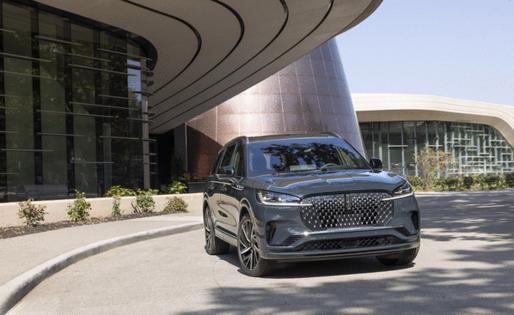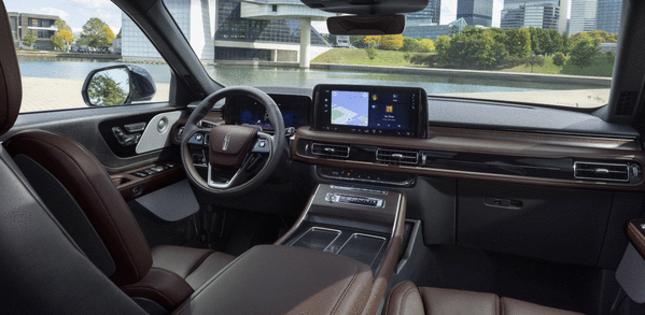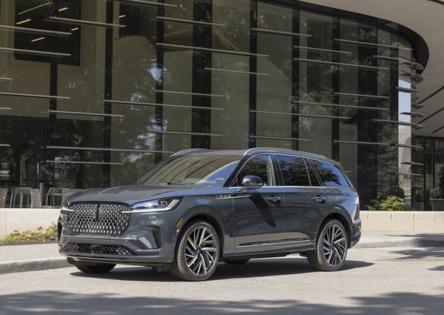Auto review: Another fresh face for the 2025 Lincoln Aviator
Published in Automotive News
There’s a design consistency to the best luxury car brands, a continuum of style that unconditionally declares what it is. Go back to 1938 and you’ll recognize the BMW 328’s grille. The same is true of Mercedes-Benz. Cadillac became synonymous with egg crate grilles and tailfins, boasting a sinister yet sublimely luxurious vibe. Then there’s Rolls-Royce, with a grille as imposing as a bank vault, with a price tag that requires robbing one.
But then you come to Lincoln and the mind goes blank, as Lincoln’s design heritage has been a decided mixed bag.
The brand has had moments of brilliantly elegant design: the 1937 Lincoln, the 1940 Lincoln Continental and the 1955 Continental Mark II. These are cars that whispered their clients’ silent wealth and old money. True, the 1958 Lincoln was garish. Yet three years later, the 1961 Lincoln Continental proved classically sublime.
But a decade later, Lee Iacocca ordered a Rolls-Royce grille to be slapped on the proboscis of the 1969 Continental Mark III. This tacky, second-rate brand identifier becomes a Lincoln hallmark for decades, as did the car’s hump on its trunk lid. There were moments when modern styling saved the brand from irrelevancy, such as the 1984 Mark VII or the 1991 Lincoln Town Car. But by the late 1990s, any semblance of taste was squandered with the penny-pinching Town Car redesign in 1997. At the time, it was easily the ugliest car on the block. Yet that didn’t prevent further travesties, such as the Lincoln MKT. By this point, the mock Rolls-Royce grille was gone, but so was anything remotely identifiable as Lincoln.
Leave it to designer David Woodhouse to restore some semblance to taste to Lincoln, with a distinctive face and beautifully finished interiors that acknowledge the best of the brand’s past without imitating it.
Now Woodhouse is now gone, and his replacement has put his stamp on the brand with the redesigned two-row Nautilus. That same face is now seen on the front of the Aviator. The result is more youthful, yet also a bit more generic. It also scuttles Lincoln design language yet again, much to Lincoln’s misfortune. This is a brand with more personalities than Sybil.
But while its design language looks sporty, its appearance belies its demeanor.
There are other updates as well. The instrument panel is fitted with a new 12.4-inch instrument gauge cluster and a 13.2-inch infotainment touchscreen. The user interface was developed with Google Automotive and proves easy to use for the most part. The left side of the screen features on-screen buttons to access certain features, but the audio system isn’t among them — a major oversight. But at least the sound quality is impressive from its Revel Ultima 3D audio system. With 28 speakers, it can even make the lousy quality of Sirius XM Radio sound good. A Wi-Fi hotspot, Apple CarPlay and Android Auto capability come standard.
Offered in ascending Premiere, Reserve and Black Label trim, the Aviator can seat six or seven, depending on whether you opt for the second-row Captain’s Chairs. Trim quality is very good, with the Reserve test model having the requisite upscale ambiance. Seats tend toward the firm side, but there’s enough cushioning to keep you comfy for long drives. That said, there’s far too much road noise over rough surfaces, which detracts from its luxury image. Although it does deliver a fairly good, appropriately soft ride. You can order the dynamic handling package and get an adaptive suspension with air springs and variable-assist steering. But the standard setup will serve you well.
With three rows of seats, the rear is best left for those you hate. But cargo space is good with all seats in use, measuring a decent 18 cubic feet.
Power comes from a twin-turbocharged 3.0-liter V-6 that funnels its power to the rear wheels, or all four. It’s paired with a 10-speed automatic transmission. It has fairly good grunt for the cut and thrust of daily driving. It’s fairly quick, but not the fastest in its segment. The engine sounds gruff when pushed, robbing the car of its big buck character. And there’s no fun to be had driving it, as the Aviator feels cumbersome when asked to hustle. Stately cruising is this SUV’s milieu. Fuel economy is EPA-rated at 21 mpg, but we never broke 18 mpg.
Certainly, there’s no mistaking the Aviator for anything other than an American luxury SUV. It’s fairly good in a market segment teeming with excellent ones. Yet it possesses a quintessential American character that renders its nationality unmistakable. And that’s not a bad thing.
And if you like its fresh face, I’d advise you to go grab one. Who knows how long it will be before it's replaced once again.
2025 Lincoln Aviator
Base price: $60,525-$88,840
Engine: Twin-turbocharged 3.0-liter V6
Horsepower/Torque: 400/415 pound-feet
EPA rating (combined city/highway): 21 mpg
Observed fuel economy: 18 mpg
Length/Width/Height: 199/80/70 inches
Ground clearance: 8.5 inches
Payload: 1,508 pounds
Cargo capacity: 18 cubic feet
Towing capacity:5,000 pounds
©2025 Tribune Content Agency, LLC













Comments